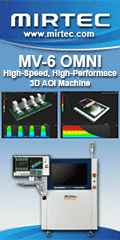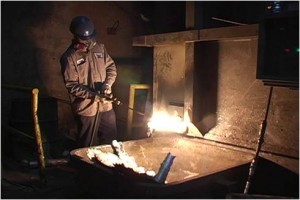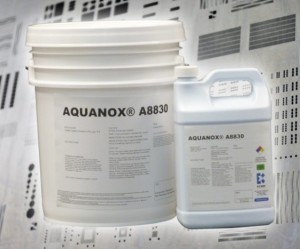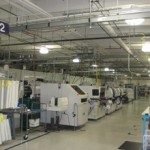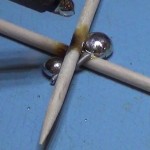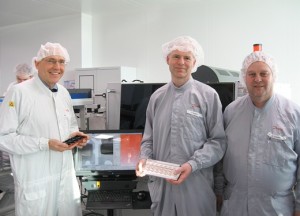Soldering fume in electronics manufacturing – damaging effects and solutions for removal
Introduction
Modern electronics manufacturing is made up by a multiplicity of different separation and joining processes, with the later surely taking the vast majority of production technology. Alongside gluing, welding and laser processes, soldering still holds a primary position in electronic assemblies. However, soldering does not always equal soldering, because there are quite a lot of different soldering technologies. Accordingly, you have to distinguish between automated and manual soldering procedures.
No matter which soldering process you analyse, all of them have one aspect in common: they produce airborne pollutants, which may have a negative impact on employees, plants and products as well.
Soldering procedures in electronics manufacturing
There are a variety of soldering procedures, but not all of them are used in electronics manufacture. Common soldering techniques in assembly production are:
● Wave soldering or flow soldering
● Reflow soldering
● Dip soldering
● Hot air soldering
● Selective soldering
● Laser soldering
● Vacuum soldering
● Vapour phase soldering
In the production of electronic assemblies, almost only soft soldering is used. The melting temperature of the solder is lower than the melting temperature of the elements to be joined, e.g. component leads to PCB pads – (approx. 180 to 260 °C). The molten solder flows between the metal parts. The objective is to create a firm, airtight, corrosion-resistant, electrically and thermally conductive interconnection. The solder is mostly designed from alloys in the form of solder wire, solder bar or solder paste. Depending on the scope of application of the final product, these alloys are composed of tin, lead, antimony, silver and/or copper. In the solder, fluxing agents can be contained, which are compiled from different chemical compositions such as rosin. Normally, halogen-free flux agents are used to support the build of proper solder joints.
Automated soldering procedures and hand soldering
Some decades ago, numerous workers, equipped with soldering irons, soldered electrical assemblies by hand, whereas today automated soldering systems of different size are used. These plants are highly specialized systems and perform a unique soldering technique, e.g. reflow soldering or selective soldering. The use of these systems depends on type and lot size of the assemblies. Many production lines feature different systems, which are used according to their distinct technology.
Hand soldering at manual workplaces is still found in the vast majority of assembly production plants. The main application area is for pre-production runs, prototyping and repair.
Released airborne pollutants
Depending on areas of application of the finished assembly and requirements of the components, various soldering alloys and flux agents are considered. During the soldering process, large parts of the flux agent and a small portion of the solder will evaporate. The emerging aerosols and particles could be released into ambient air. This will not only spread unpleasant odours, but these airborne pollutants can lead to serious medical conditions. Particularly dangerous substances are aldehydes, which emerge from materials containing colophony; some of them may be carcinogenic.
In addition, gases are released from coatings, adhesives or substrates during heating of the assembly.
These gases also transport sticky aerosols, which build up in the soldering machines or – even worse – on the products and contaminate them. This leads to increased cleaning and maintenance costs, and the operability of the plant can be impaired. In addition, the manufactured products may even be corroded by the contaminations, which could affect functionality and quality.
In conventional wave soldering processes, the entire printed circuit board is fluxed. The emerging spray mists from alcohol-based flux and other evaporations may lead to explosive, highly flammable vapour/air mixtures.
Differentiation and legal regulations
Airborne pollutants are classified according to particle size. This classification is set primarily by the influence of the emissions on the human organism. Thus, airborne pollutants are not only differentiated, whether they are brain, nerve or airway damaging. A distinction is made, whether they are inhalable (I-fraction) or alveolar (A-fraction). Pollutants of the A-fraction overcome the so-called lung-blood barrier, which separates air-filled cavities of the pulmonary alveolus from blood in the capillaries.
Therefore, the DIN EN 481 defines statutory limit values. According to technical rules for hazardous substances in various countries, there are limit values and legal regulations that determine the utilization of extraction and filtration technology to meet these regularities.
Capture of air pollutants and their sustainable filtration
In order to eliminate developing air pollutants, it is not sufficient to provide for only good ventilation in the manufacturing environment. The use of efficient extraction and filtration technology is mandatory and required by the Employer’s Liability Insurance Association.
The variety of the available extraction and filtration systems is high. The selection of the appropriate system depends on type and volume of pollution, the use in automated, semi-automated or manual production environments and on mobility as well as flexibility.
State of the art extraction and filtration units achieve such a high cleaning rate for the processing air that the cleaned air can even be re-circulated into the work area.

Figure 4: Mobile extraction and filtration unit for solder fume for use at manual work places, JUMBO Filtertrolley 2.0 LRA
Collecting the airborne pollutants is a significant aspect, when running extraction systems for air purification. Close proximity to the source of emission is crucial – the closer, the better. Not only in terms of capturing all particles before they reach ambient air and build up on plants and products, but also to minimise economic expenses. The larger the distance between source of emission and collection element, the higher the necessary suction capacity of the extraction and filtration system – with, in turn, a huge impact on energy consumption.
Collection elements help to increase the effectiveness of the extraction process. They are end fittings of extraction arms, which ensure an optimal absorption of the emissions. Depending on the amount and type of the pollution, as well as the airflow principles, users can select from a great variety of designs. Even complete enclosures are available.
Choosing the proper collecting element is decisive for the quality of the entire extraction and filtration system. The level of pollutant coverage is the basis for a subsequent high-grade filtration, which finally defines the overall efficiency and therefore the residual amount of pollution in the re-circulated air.
Summary
The competitive pressure in electronics manufacturing is tremendous. Only those who provide high quality products, minimise maintenance costs and rely on healthy employees, will successfully survive in highly competitive markets. Thereby air purification plays a major role.
In the field of electronic assemblies manufacture, this means more than ventilation and vacuum cleaning. Besides removing dirt and unpleasant odours, it is mainly about removing airborne hazardous substances, which may have a drastic impact on humans, machinery and products. Effectively running extraction and filtration units help entire enterprises to maintain competitiveness.
Authors:
Stefan Meissner, Head of Corporate Communications at ULT AG
Arne Neiser, Product Manager Wave and Reflow Soldering Systems at SEHO Systems GmbH
Views
Skyscraper 1
